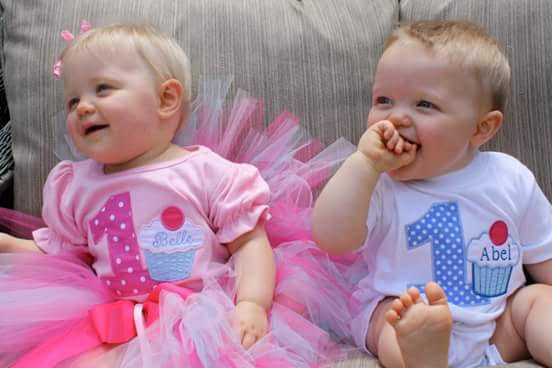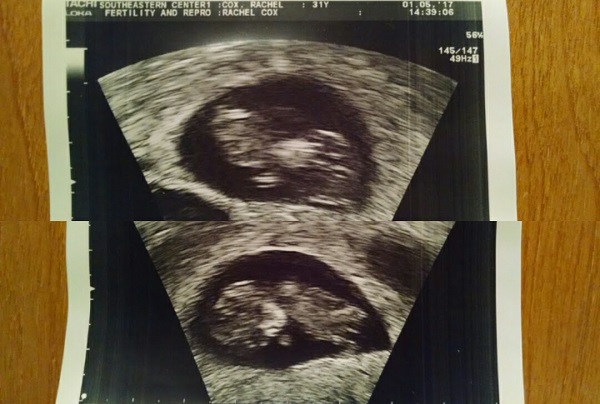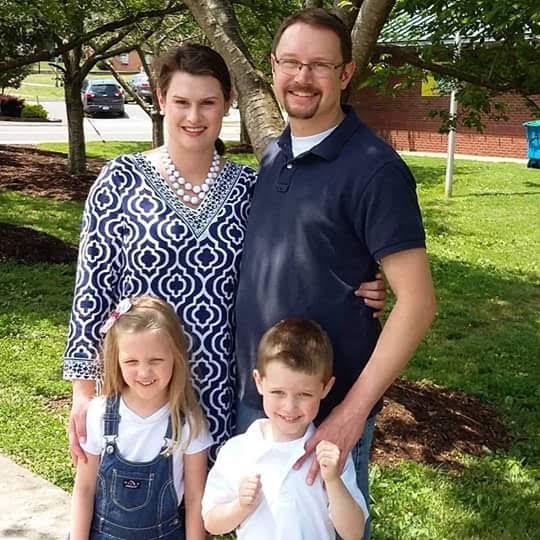Embryo adoption is a little known or understood process, but more families are taking this option and giving life to children who otherwise may have been permanently frozen or destroyed.
These human embryos are the result of an infertility procedure called in vitro fertilization, which involves the harvesting of sperm and eggs from parents and creation of human embryos outside of the womb. The embryos are frozen and later implanted in the woman’s womb; but often more embryos are created in the process than are implanted.
The National Embryo Donation Center (NEDC) estimates there are between 700,000 and 1 million human embryos frozen in storage in the United States today. When couples decide they no longer want to implant the embryos, their options consist of paying to keep them cryopreserved in storage indefinitely, donating them to research (which destroys the embryos’ lives) or allowing the embryos to thaw and die.
But some families are choosing another option for their embryos – adoption. Embryo adoption, sometimes referred to as snowflake adoption, is a life-affirming alternative that gives these already unique human children a chance at life.
LifeNews recently spoke with two pro-life families who adopted children as embryos with the help of the National Embryo Adoption Center.
Rachel and Greg Cox of Tennessee said friends of theirs first told them about embryo adoption when they were struggling with infertility.
The high school sweethearts said they went to several different infertility doctors before deciding to adopt. They adopted their oldest child through a traditional adoption process; but when they decided to adopt again, a friend from church suggested embryo adoption.
“As we started reading more about it, we felt the call to do it,” Greg told LifeNews. “This is really neat. These is always a risk, but we strongly felt the call to do it.”
A Washington Post article about embryo adoption was another sign for the Cox family. The article mentioned a doctor who they already were seeing for fertility care.
“So we took it as another sign,” Rachel said. “There are very few doctors in America that do embryo adoption, so to have one only an hour and a half away is amazing.”
At the time of this interview, the Coxes were pregnant with triplets who they adopted as embryos. They are due in August.
Embryo adoption is similar to traditional infant adoptions in many ways. Couples must raise money for the embryo adoption, including the medical procedures involved in implanting the unborn child in the mother’s womb. Adoption agencies also require that families have a home study completed, show financial ability to raise a child, go through background checks and more.
Follow LifeNews.com on Instagram for pro-life pictures.
Jennifer and Aaron Wilson of North Carolina also adopted several children as embryos. Having learned about embryo adoption in college, Jennifer said it was something she always wanted to do to put her pro-life beliefs into action.
Like the Cox family, the Wilsons’ struggle with infertility led them to pursue embryo adoption sooner rather than later.
“We were told we had infertility issues and would need IVF [in vitro fertilization], but we didn’t want to contribute to frozen embryo issue,” Jennifer said. “So we said we wouldn’t do IVF, and two weeks later, we applied with National Embryo Donation Center.”
Their first adopted child was transferred into Jennifer’s womb as an embryo in July 2010.
“Obviously it involves a lot of medicines, and doctors’ instructions. It started out with just controlling my body’s natural cycle so they could time exactly when to place embryos in my womb,” she said. “They scheduled me to come up to the NEDC at that time in my cycle and do the transfer, then did a blood transfer test two weeks later locally to see if I was pregnant just like with a normal pregnancy.”
Tragically, the first two embryos who they adopted did not survive. The Wilsons were devastated, but they refused to give up.
“We knew our efforts weren’t in vain,” Jennifer told LifeNews. “We went back in November 2010, had a successful pregnancy with our baby twins, now 5 ½ years old; their names are Abel and Belle.”
Aaron said people sometimes confuse embryo adoption with in vitro fertilization. He runs a blog, “Give God Glory,” where he helps to raise awareness about the need for embryo adoption and the huge number of human embryos in storage in the U.S.
“An important clarification is that embryo adoption is response to a situation that in vitro fertilization creates, explicitly an excess of embryos created in vitro fertilizations. These are different things,” he said.
He reflected on the rewards and joys of having children adopted non-traditionally.
“Living with Abel and Belle and watching them grow is the blessing most tangible and in front of us every day. I don’t want to overshadow that we view every adoption and every kid we lost as a success as well in honoring God; knowing we have done that is a reward,” Aaron said.
His wife said they talk to Abel and Belle about their unique adoption, and they found a few children’s books that help explain where they came from. Jennifer said they also impress upon their children the value of every baby’s life, beginning from the moment of conception.
“We talk to Abel and Belle and pray for these children that were lost,” Jennifer said. “One time Belle said, ‘Mommy, there will be a stampede of babies waiting for us in Heaven.’ Her using that terminology just reminded us that from our perspective, we haven’t gotten to interact with these children in this life but will get to in the next life.”
Both families emphasized that embryo adoption – like any adoption – is not a decision to be made lightly. Their Christian faith and prayer were essential elements of the decision making process.
“We have no regrets,” Jennifer said. “It was emotionally a struggle but they are people created in the image of God. If we saw a child on the side of the road frozen in an ice cube or block of ice, would we just walk by and not save them? No, we would save them. That’s what they are, frozen children.”










